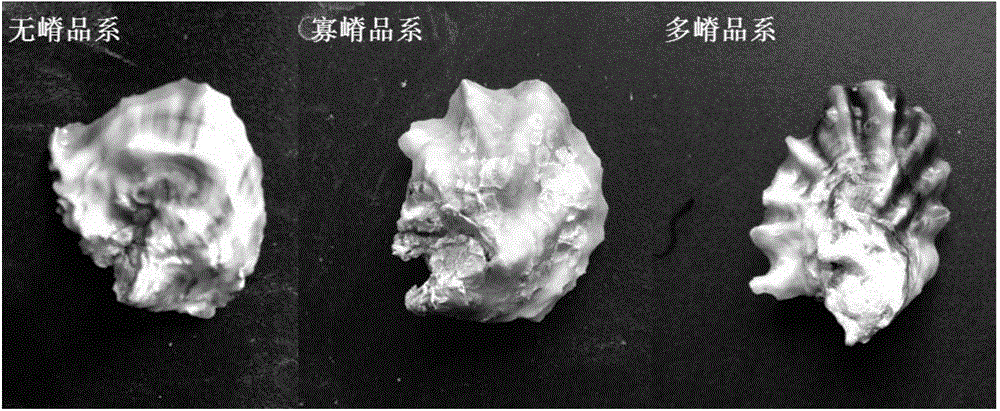Breeding method for Crassostrea sikamea by taking left shell radial ridge number as mark
A technology of Kumamoto oyster and radial crest, which is applied in the field of shellfish genetics and breeding, can solve problems such as genetic breeding that has not yet been seen, and achieve the effects of easy popularization, strong practicability and improved breeding yield
- Summary
- Abstract
- Description
- Claims
- Application Information
AI Technical Summary
Problems solved by technology
Method used
Image
Examples
Embodiment 1
[0021] a. Strain division: On April 12, 2012, during the breeding season of Kumamoto oysters, wild Kumamoto oysters in Potou, Zhanjiang were used as the basic population, and the offspring were bred and reared at the Zhanjiang Marine Economic Animal Experimental Station of the South China Sea Institute of Oceanology, Chinese Academy of Sciences. On April 10, 2013, when the gonads of the offspring matured, 3,000 individuals were randomly selected. According to the number of radiating crests on the left shell, they were classified into three major groups. After excluding 2,232 individuals with atypical traits, the cristaeless strains were screened out ( Radial crests = 0) 245, oligocrist lines (radial crests ≤ 5) 307 and multi-crist lines (radial crests > 6) 216.
[0022] b. Strain self-propagation: using the 3 strain individuals in step a as parents, on April 10, 2014, the second-generation breeding was carried out through the group self-propagation within the strain (can be car...
PUM
 Login to View More
Login to View More Abstract
Description
Claims
Application Information
 Login to View More
Login to View More - R&D
- Intellectual Property
- Life Sciences
- Materials
- Tech Scout
- Unparalleled Data Quality
- Higher Quality Content
- 60% Fewer Hallucinations
Browse by: Latest US Patents, China's latest patents, Technical Efficacy Thesaurus, Application Domain, Technology Topic, Popular Technical Reports.
© 2025 PatSnap. All rights reserved.Legal|Privacy policy|Modern Slavery Act Transparency Statement|Sitemap|About US| Contact US: help@patsnap.com


